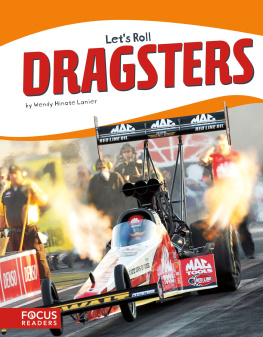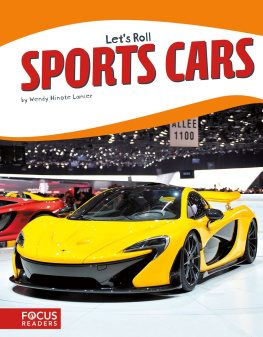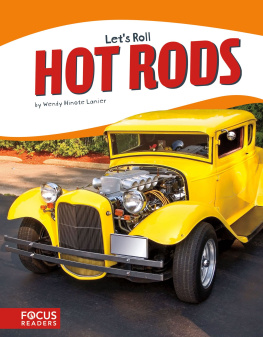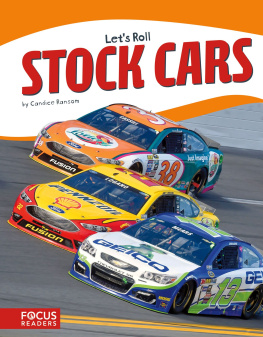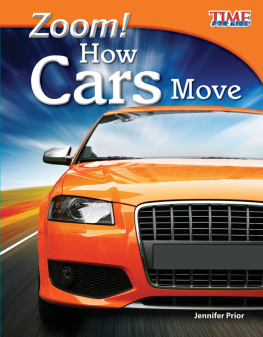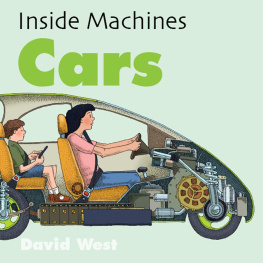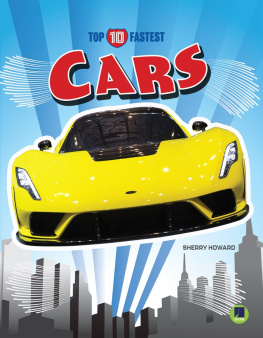
by Wendy Hinote Lanier
INDY CARS
Lets Roll

Wendy Hinote Lanier is a native Texan and former elementary teacher who writes
and speaks to children and adults on a variety of topics. She is the author of more
than 20 books for children and young people. Some of her favorite people are dogs.
About the Author
www.northstareditions.com
Copyright 2017 by North Star Editions, Lake Elmo, MN 55042. All rights
reserved. No part of this book may be reproduced or utilized in any form or by any
means without written permission from the publisher.
Produced for North Star Editions by Red Line Editorial.
Photographs : Jeff Roberson/AP Images, cover, 1; Michael Allio/Icon Sportswire/
AP Images, 45; Action Sports Photography/Shutterstock Images, 7, 25;
HodagMedia/iStockphoto, 9, 2223, 29; AP Images, 1011, 13; HodagMedia/
Shutterstock Images, 15, 1617, 2627; Sergei Bachlakov/Shutterstock Images,
19; Zoran Karapancev/Shutterstock Images, 21
ISBN
978-1-63517-051-1 (hardcover)
978-1-63517-107-5 (paperback)
978-1-63517-208-9 (ebook pdf)
978-1-63517-158-7 (hosted ebook)
Library of Congress Control Number: 2016951024
Printed in the United States of America
Mankato, MN
November, 2016
Synched Read-Along Version by:
Triangle Interactive LLC
PO Box 573
Prior Lake, MN 55372
978-1-68444-284-3 (e-book)

TABLE OF CONTENTS
CHAPTER 1
The Indianapolis 500
CHAPTER 2
Indy Car History
CHAPTER 3
What Is an Indy Car?
CHAPTER 4
Indy Cars of Today
HOW IT WORKS
The Dallara Chassis
The Dallara Chassis

CHAPTER
THE INDIANAPOLIS
Its race day at Indianapolis Motor
Speedway. The Indianapolis
is about to start. Thirty-three
engines roar to life. The noise they
make seems to shake the ground.
Indianapolis Motor Speedway
is one of the most famous race
tracks in the United States.

In the stands, nearly 400,000
spectators cheer wildly. For a
moment, the crowd is louder than
the engines.
The person who starts the race
waves a green flag. The 500-mile
THE BRICKYARD
The Indianapolis Motor Speedway is often
called the Brickyard. Thats because the track
was originally covered in bricks. Little by
little, the bricks were covered with asphalt.
By 1961, the entire track was asphalt except
for a 36-inch (91-cm) strip.

(805-km) race is under way. The
cars head into the first turn on the
oval-shaped track. Forty seconds
later, they have completed the first
of laps.
Indianapolis Motor Speedways famous strip of
bricks marks the finish line.

For the next three hours, drivers
compete for the lead. Race officials
keep a close watch on the position
and time of each car. At last, drivers
see the checkered flag. Fans roar
their approval as the winner crosses
the finish line.
Winners of the Indy are given a
bottle of milk to celebrate their win.
FUN FACT

Drivers can have average speeds of greater
than miles per hour (290 km/h).

CHAPTER
INDY CAR HISTORY
In the early 1900s, the car
business was brand new. As new
models were built, carmakers
started looking for ways to test
them. They built a test track near
the city of Indianapolis, Indiana.
In the first Indianapolis 500,
mechanics rode with the drivers.

They began hosting short races on
the track.
In 1911, the carmakers held a
long race to attract more publicity.
They wanted people to see their
newest car models. They decided
the race would be miles
(805 km) long. The Indianapolis
was born.
FUN FACT
Approximately 90,000 people paid
$1 each to see the first Indianapolis
in 1911.

By the mid-1920s, the
Indianapolis had become a
high-paying race for professional
drivers. The race cars had
no tops and only one seat.
George Souders won the 1927 Indianapolis

Racing mechanics tinkered with
the engines to make them go faster.
The cars became known as Indy
cars because they were designed
A CONFUSING
BEGINNING
The first Indy was a confusing mess.
There were no electronic sensors to help
keep track of the cars. As the leaders began
to lap the slower cars, it was difficult to
tell who was winning. Finally, after hours
and minutes of racing, Ray Harroun was
declared the winner.


